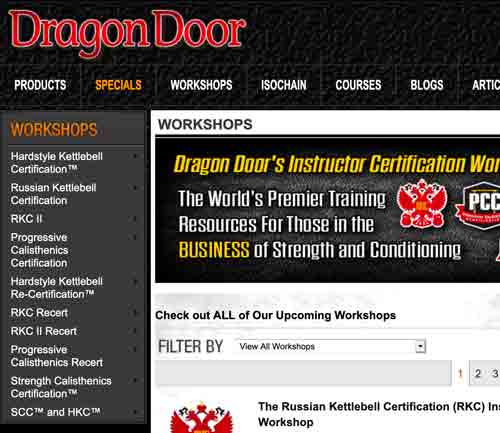The ideas below flow from four seminal works :
The Checklist Manifesto by Atul Gawande
Strategic Negotiation by Brian Dietmeyer
The Cathedral and the Bazaar by Eric S. Raymond
and
Blink by Malcolm Gladwell
I have borrowed heavily from each for key concepts and examples and wish to give the works and their authors full credit for anything beneficial that you derive from this article. If you find this article at all interesting (which I hope you do), then I recommend that you review the above texts, as they are all excellent reads. Also, I am indebted to those that participated in Scott Bird’s Twitterchat #69. The generosity of the participants in sharing their best practices and personal experience helped me to refine my thinking and encouraged me to follow-up with this article.
Checklists: A Strategy for Managing the Complex Problem of Improving Physical Performance
During the last century, the world’s greatest achievements came from solving complicated problems. For example, splitting the atom and putting a man on the moon, required multiple people and teams with specialized expertise. Unanticipated difficulties were frequent and timing and coordination of the work was critical. However, as experience was gained, we were able to repeat and refine the process, until it was nearly perfect.
Encouraged by our success, we entered an age of specialization. This is no less true in the strength and fitness world, where we now have a panoply of experts from science, medicine, and coaching focused on particular and specialized aspects of exercise, nutrition, and recovery. There are experts, including entire sub-specialties for doctors, physical therapists, kinesiologists, and dietitians and technical experts, who can be certified generally (e.g. CSCS for strength training and conditioning) or specifically (e.g. particular training methods like kettle bells). Professional athletes now assemble teams of experts to help with their training. Amateur athletes and serious exercise enthusiasts have access to physicians, personal trainers, nutrition professionals, and various therapists to help with recovery, not to mention the wealth of information and data that can be pulled from the Internet.
Unlike building a rocket ship, maximizing individual athletic performance includes variable factors that are different every time. These factors differ between athletes and even within the same athlete (training methods change as athletes age, are injured, gain strength, improve skills, etc.). It is this variability that makes training a complex problem.
So, what is a complex problem? Well, complex problems are not simple problems. Simple problems are best managed by following an established set of actions with little or no variation in technique. Think of baking a cake from a mix. If you are careful and follow the instructions, you will successfully bake a cake.
Complicated problems like building a rocket ship and sending it to the moon and back, cannot be accomplished by following a recipe. Complicated problems require multiple people or teams with specialized expertise. Unanticipated difficulties are frequent and timing and coordination of work is critical. But, with complicated problems, you can repeat and refine the process, until it is nearly perfect.
Complex problems, like raising a child, helping a client manage a lawsuit, or maximizing athletic performance include variable factors that are different every time. Expertise as a parent, attorney, or trainer is valuable, but not sufficient to adequately address complex problems, because their outcomes remain highly uncertain.
This does not mean that acceptable outcomes for complex problems cannot be achieved or are merely the result of good fortune. Rather, there are certain strategies that greatly enhance the probability of achieving acceptable outcomes. As our awareness and understanding of complexity improves, it becomes clear that the job of a professional is not just to be an expert in a particularized field, but to become a team member actively engaged in achieving an acceptable outcome.
As an attorney, the most important question that I can ask a client is, “What do you believe is an acceptable outcome?” Notice the term acceptable. Perfect outcomes are not achievable. A client that is hoping for a perfect outcome to a complex problem is sure to be disappointed, as trade-offs become necessary, when responding to unexpected problems.
Determining an acceptable outcome is really a matter of negotiating. On the one hand, there is the wish list that defines a perfect outcome. After clients have brainstormed or told me about everything that they would like to achieve, we put those interests in rank order. Then, we turn and consider competing interests. These often include incompatible goals, conflicting obligations, the interests of other parties, and limits on time and resources (this by no means exhausts the list of potential competing interests). Comparing the two lists helps define an acceptable outcome and determines where efforts can be focused to achieve the greatest results.
When dealing with a complex problem, any plan for achieving an acceptable outcome must include a list of necessary tasks and a plan for maintaining communication. The task list ensures that routine steps are not missed. The communication list guarantees that everyone talks through and contributes to resolving the unexpected and hard problems.
Properly formulated task focused checklists are very good at reducing the probability that a key step will be skipped or missed, because they engage the thinking part of the brain. In the field, key steps are not so much consciously skipped, as much as they are missed due to environmental distractions. By creating an agreed upon checklist of action items, you decrease the risk that you, your client, or another member of the team will skip a key step due to distractions. The checklist serves as a cognitive safety net, making it easy to embrace the project at hand, without skipping simple steps.
An example from training might be properly warming up. Everyone knows it’s foolish to engage in physical training without warming up first, but with time pressure, competing interests, or environmental stress, this step occasionally gets skipped. The risks associated with skipping this step, are significant. Pulled muscles are a major setback to a training program. When you balance the interests involved, saving a few minutes versus suffering a major setback, the risk associated with skipping this key step is unacceptably high. Therefore, item number 1 on your checklist could be:
- Complete Warm Up Exercises
A note of caution, the agreed upon list must be a general outline of killer items. Killer items are those action steps that if skipped substantially increase the probability of an unacceptable outcome. In the long run simple recipes and even detailed step by step guides will not work with complex problems. You want the members of your team thinking creatively and adjusting to circumstances, not subserviently following instructions.
Because members of the team will be adjusting to changed circumstances, you need a communication list. You cannot assume that the action steps you have laid out will actually work. The assumption must be that problems will be encountered. Anything can go wrong. Any necessary step can be missed. Getting key players together and having them take a moment to talk things over as a team, helps identify, avert, and remedy problems.
Having a communication list, which requires team members to pause and reflect on problems, embraces Eric S. Raymond‘s concept, laid out in The Cathedral and the Bazaar, that with enough eyeballs all bugs are shallow. Rather than establish a rigid hierarchy that communicates by dictating instructions, you want to diffuse power. This means that each team member is empowered to adapt to circumstances based on their experience and expertise, but they must talk to one another and they must take responsibility for their actions. By taking this approach to problem solving, members with the least power are able to raise issues and recommend solutions to members of the team with the most power.
For an excellent example of how effective this strategy is when dealing with complex problems see the reviews of Millennium Challenge 02 (MC02). War fighting easily qualifies as a complex problem and MC02, a simulated war game, was an experiment in war fighting. The red team commander, retired United States Marine Corps Lieutenant General Paul K. Van Riper, established a command and control policy that diffused power throughout his network of experts and empowered team members to report problems and recommend solutions. On the other side of the exercise, the blue team relied on the classic centralized hierarchical command structure and focused on technological superiority as the key to victory.
Van Riper’s red team, with its diffuse power structure, was able to overcome the blue team’s superior technology by developing an array of communications systems that went undetected by the blue team. These included messages relayed from minarets, carried by motorcycle, and signaled by semaphore. In short order, the red team was able to coordinate an attack, without missing any key action steps. On the second day of the exercise, the red team inflicted devastating losses to the blue team naval force. An acceptable outcome for red and an unacceptable loss for blue.
If you look carefully, you will find checklists everywhere complex problems are being managed successfully. They may not be thought of as checklists, but they are there. As a successful professional, it is very likely that you are already using the strategies outlined above in some circumstances. With a raised awareness of the nature of complex problems, you will likely find many more areas of your practice that could benefit from a list of key tasks and a coordinated communication protocol.
In my own practice, I often face clients that become confused, frustrated, or angry. They are operating in a complex area (where complete compliance with regulatory requirements is expected) and they encounter unexpected problems that have the potential to be regulatory violations. To help coordinate communication between team members, we have developed a matrix that provides an overview of a coordinated response to a potential violation. To make sure that key steps are not skipped or missed we developed a checklist for responding to initial reports of potential violations. Now during meetings, team members are less anxious and more focused, as they recognize that they are helping shape the final outcome, rather than seeing themselves as victims of circumstance.
One note of caution, checklists are living, breathing documents. They must be tested in the field, reviewed, and revised until they are functioning effectively. Then, when new and unexpected problems are encountered, they must be updated.
Ultimately, your performance as a professional is measured not by your expertise alone, but by how well you contribute to a team of experts focused on achieving an acceptable outcome for a particular client. Because improving athletic performance is a complex problem, strength and fitness professionals are ideal candidates for adopting an approach that includes checklists. Well thought out and field tested checklists are a tool worth exploring if you are interested in improving your performance as a professional.













0 Comments
Trackbacks/Pingbacks